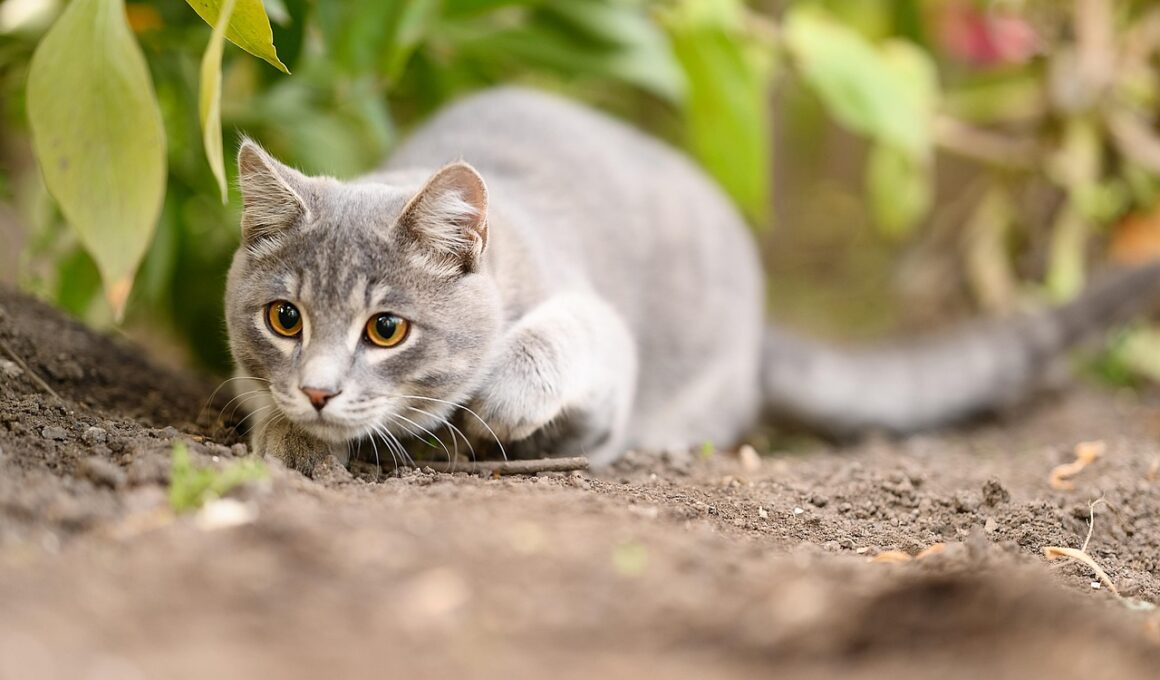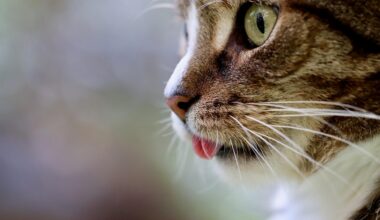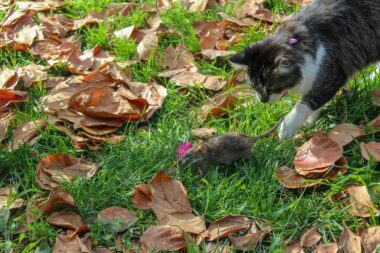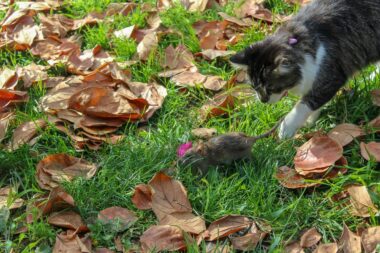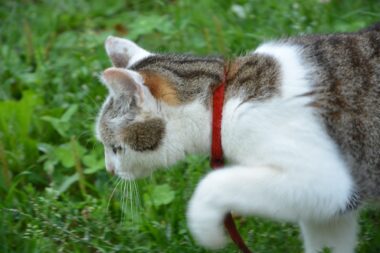Why Do Cats Hunt? Exploring the Natural Instinct
The instinct to hunt is deeply embedded in a cat’s nature, stemming from ancestors who relied on their predatory skills for survival. Domestic cats, while living comfortably in homes with ample food supplies, still exhibit these behaviors. Hunting is not solely about feeding; it’s integral to their psychological well-being. Cats typically exhibit hunting instincts even if they are well-fed. This leads to an exploration of their behaviors such as stalking, pouncing, and chasing. When these behaviors arise from instinct, it satisfies their urge to explore their environment and engage in play-like actions. This instinct serves multiple purposes: it encourages physical activity and mental stimulation. Observing your cat’s hunting rituals can be fascinating and offers insights into their psyche. For pet owners, understanding this instinct can lead to implementing enriching activities that echo their wild roots. Creating a stimulating environment can further support their natural hunting behaviors. For instance, interactive toys mimicking prey can enhance their experiences and provide an outlet for their instincts, ensuring both emotional and physical health.
Furthermore, the hunting style of a cat is predominantly solitary. Unlike dogs that hunt in packs, cats have evolved to be solitary hunters, employing stealth and precision to catch their prey. Their agility and stealth give them an advantage, allowing them to sneak up on unsuspecting animals. This is often seen in their play, where a simple piece of string or a feather toy can engage their predatory instincts. Understanding this solitary hunting behavior helps owners recognize why their cats may prefer interactive play alone. Besides providing entertainment, these hunting simulations are essential for their cognitive development. Activities that mimic hunting enable cats to sharpen their reflexes and decision-making skills, critical for their overall well-being. Moreover, it cultivates their natural instincts rather than suppresses them. Encouraging these instincts through play can instill a sense of accomplishment and help alleviate stress levels. Thus, engaging your cat in hunting simulation games is beneficial. They remain entertained, healthy, and joyful, more akin to their wild ancestors. Ultimately, such stimulating activities can create a balanced, healthy lifestyle for your feline friend.
Types of Hunting Behaviors
Several key stages characterize a cat’s hunting behaviors, starting with stalking. Stalking is a methodical and silent approach to locating prey. Cats use their innate skills, employing low body stances and minimal noise to approach their target. This phase is less about speed and more about patience, allowing them to gauge the situation. Once the cat locates its target, the pouncing phase follows. This rapid burst of energy showcases a cat’s incredible agility and speed, key elements in attracting prey. Pouncing will typically conclude with a catch, be it real or simulated within their playtime. Tracking and chasing also play vital roles, as they allow cats to exercise their physical capabilities and hone their reflexes. These movements are crucial in maintaining a healthy weight and muscle tone. Educating yourself on these behaviors will empower better engagement practices in your interaction with your pet. Rather than discouraging such actions, embrace their playful characters by incorporating games that challenge their stalking and pouncing prowess. Toys that roll unpredictably or flutter can stimulate these natural instincts, reflecting their primal behavior.
Social and environmental factors also influence a cat’s hunting behavior. For indoor cats, the opportunity to simulate hunting through play is essential for alleviating boredom and stress. Without stimulation, cats may become depressed or anxious, exhibiting destructive behaviors. Pet owners can combat this by offering engaging toys and play sessions that mimic the hunting experience. Additionally, creating a multi-dimensional space, such as cat trees or shelves, enables them to explore vertically, which aligns with their hunting instincts as they observe from a height. Interaction with live prey, such as feathered or mechanized toys, can instigate interest in their predatory skills, resulting in a healthy outlet for their energy. Outdoor exposure, where safe, allows cats to engage in actual hunting experiences, satisfying their instincts directly. Nevertheless, it’s crucial to supervise them to avoid potential harm. Understanding these environmental factors and accommodating them can lead to a content and healthy feline. Spending time considering how best to incorporate these boundaries and allow for their natural instincts to flourish ensures a rewarding pet ownership experience.
Kitty’s Mental Health
Moreover, engaging in hunting behaviors significantly benefits a cat’s mental well-being. These activities promote cognitive stimulation and serve as stress relievers, enhancing their quality of life. Replicating the challenges of hunting fosters an environment rich with opportunities for exploration and discovery. By partaking in simulated hunting games, such as using laser pointers or moving toys, cats can fulfill their natural instincts while remaining indoors. Mental stimulation is vital in preventing boredom-related issues, which may lead to undesirable behaviors. Particularly, indoor cats may feel restricted, prompting a need for more engaging outlets for their instincts. A varied play routine allows cats to express their natural instincts creatively. Regular engagement in such activities will also help maintain their mental agility, providing a balance that is crucial for their health. Owners must recognize the importance of these activities and schedule regular playtime to ensure it remains a staple in their routine. Thus, fostering your cat’s instinctual need for activity directly correlates with their happiness and health. You create a comprehensive environment that nurtures both physical activity and mental stimulation.
A significant aspect of hunting instinct is the ability to refine these skills through repeated practice. Just like in the wild, cats must develop their strategies and techniques over time to become effective hunters. Engaging in various types of play can help in this development. For instance, toys that simulate behaviors or movements of prey can enhance their focus and precision over time. In contrast, interactive systems activated by the cat’s touch may require creative problem-solving, further enhancing their cognitive functions. Regular play not only keeps them physically active but also provides mental challenges that keep their minds sharp. Pet owners may consider rotating toys regularly, introducing new challenges that keep their focus and curiosity piqued. This practice prevents complacency, prompting cats to engage more fully with their environment. Furthermore, observing the way each cat adopts and adapts hunting techniques is a remarkable experience. Such observations offer a window into their inherent behavior and instincts, reminding us of their wild ancestry. Emphasizing these aspects of play can create enriching moments that benefit the development of both behavior and instincts.
Conclusion: Embracing the Instincts
In conclusion, understanding a cat’s natural hunting instincts is essential for ensuring their well-being and happiness. Acknowledging that these behaviors are ingrained in their psychology helps create empathetic environments where they can thrive. Providing opportunities for active engagement contributes significantly to their mental health and physical fitness. As caretakers, fostering environments rich in simulations of their hunting habits – through innovative toys or play routines – allows us to satisfy their intrinsic needs. Encouraging such instincts can also reinforce bonds between cats and owners, creating shared moments of joy and satisfaction. Reflecting on these aspects leads to better practices within households, where understanding of feline behaviors fosters greater empathy. Through this understanding, we can invite a deeper appreciation of our feline friends, viewing their quirks and behaviors under a different lens. Ultimately, our role is to create nurturing settings that embrace these instincts and underline the importance of play and engagement. This approach enhances their quality of life while deepening our connection with these fascinating creatures, who intertwine the spirit of the wild with the comforts of home.
In summary, encouraging cats to express their hunting instincts through play and environmental experiences is vital for their holistic development. By incorporating this understanding, we can address their psychological and physical needs, ensuring that they maintain a robust state of health and happiness. The more we align our interactions with their natural tendencies, the more fulfilled they remain. Cats are not just pets; they retain a connection to their wild roots that shapes their behaviors significantly. Engaging them in activities that mimic hunting fosters a sense of purpose and allows them to develop strong cognitive skills. With our care and commitment, we can provide the enriched environments they crave, packed with challenges that honor their nature. This journey into understanding feline hunting instincts becomes shared as we create rich experiences filled with playfulness, joy, and emotional growth. Owners are encouraged to note their cat’s reactions and preferences, fostering a deeper bond while securing their companionship. Ultimately, by embracing these instincts, we enrich not only their lives but our own, creating cherished memories throughout our shared lives.
